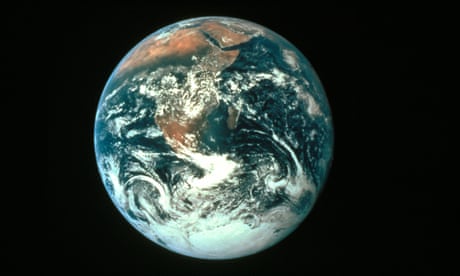Pupils climate change strike threat poses dilemma for heads | Education | The Guardian
(theguardian.com)
Headteachers across the country will this week be faced with a tricky dilemma: should they allow their pupils to go on strike?
Thousands of schoolchildren are expected to absent themselves from school on Friday to take part in a series of coordinated protests drawing attention to climate change.
At a time when politicians fret that young people are failing to engage with the political process, a headteacher’s decision to take a hard line against the strikers could be counter-productive. But equally granting permission for a day off could set a dangerous precedent and lead to safeguarding issues, it is feared. Parents could be fined for taking a child out of school.

“I chucked up a notice – ‘school strike in a few weeks’ – on the noticeboard in the common room and they wiped it off, said ‘you can’t actively publicise it in schools’ and ‘we’ll give you an unauthorised absence and detention if you strike’, but then they said ‘you can spread it by word of mouth and we do support your cause’.
”A Department for Education spokeswoman said the decision was a matter for individual schools. “However, we are clear that pupils can only take term-time leave in exceptional circumstances, and where this leave has been authorised by the headteacher.
”Supporters of the UK Student Climate Network, which so far has pupils in about 30 towns and cities signed up to the day of action, argue that the “exceptional circumstances” excuse is applicable when it comes to Friday’s day of action.
A template letter drawn up by Youth Strike 4 Climate, one of the groups supporting the network, for parents of striking children to give headteachers, states: “I’m aware of UK law that permits parents to only give permission for their child to miss school on medical grounds or in a few other cases, one of which is under ‘exceptional circumstances’.
My view is that having only 12 years left to cut CO2 emissions by 50%, as per the latest UN IPCC report, is pretty dire and exceptional circumstances to find ourselves in. And it in this light that I’m giving my child permission.”It continues: “I support her to attend the youth strike as part of active civic engagement, which is a core part of the curriculum.
People under 18 years can’t vote, but with more of their life in the future, rather than the past, it’s they who are most affected by climate breakdown.”The letter is part of a cache of documents being shared with potential protesters ahead of Friday’s strike as the pupil-led grassroots movement gains momentum.
Similar protests have been held in individual UK cities and other countries, including Australia, Belgium and the Netherlands, where tens of thousands of children refused to attend school so that they could take part in rallies to raise awareness about threats to the environment from global warming. But Friday will be the first nationwide day of action.

FacebookTwitterPinterest
16-year-old Swedish environmental activist Greta Thunberg at Davos. Photograph: Arnd Wiegmann/ReutersOrganisers were inspired by Greta Thunberg, the 16-year-old Swedish activist who last August refused to attend school so that she could protest outside the Swedish parliament building, an action that shot her to global prominence.
However, not everyone has been enthusiastic about the burgeoning movement. “The best thing you learn about going to a protest is how to join the dole queue,” Australia’s resources minister, Matt Canavan, told a radio station last November.
Belgium’s environment minister, Joke Schauvliege, was recently forced to resign her position after suggesting that the strikes were being coordinated by unknown groups and were “more than spontaneous actions of solidarity”.
In the UK, Greenpeace is providing help with the construction of banners, while the UK Youth Climate Coalition, a 10-year-old campaign group, is helping coordinate media coverage and offering advice behind the scenes.But both organisations were keen to stress the movement was organic and led by young people.
Formed in the UK only three months ago, it has grown rapidly as its message has been shared on social media. Its website was created by two 15-year-old supporters in under a week.“The wave of student strikes demanding action on climate change has been an inspiration for us all,” said Greenpeace UK’s executive director, John Sauven.
“Theresa May promised our children that they’ll inherit a healthier environment than the one we found. Those children are now taking to the streets to remind her that unless we get serious about tackling the climate emergency, her promise will be broken. At the moment she is clearly failing.
”How many children will take to the streets on Friday is open to debate. More than 10,000 students skipped school to protest in Belgium. A similar number went on strike in the Netherlands.
Supporters suggested they expected a turnout in the low thousands for this Friday’s protest in the UK but believed a second day of strike action – on 15 March and in coordination with similar protests in other countries – would be considerably larger as the movement took hold.
“I have faith it will continue to grow throughout the year,” Taylor said. “Hopefully the government will eventually listen to us because we have the greatest stake in our future and we’re doing this because we feel let down by them and we want to make a difference before it’s too late.”
Thousands of schoolchildren are expected to absent themselves from school on Friday to take part in a series of coordinated protests drawing attention to climate change.
At a time when politicians fret that young people are failing to engage with the political process, a headteacher’s decision to take a hard line against the strikers could be counter-productive. But equally granting permission for a day off could set a dangerous precedent and lead to safeguarding issues, it is feared. Parents could be fined for taking a child out of school.

“I chucked up a notice – ‘school strike in a few weeks’ – on the noticeboard in the common room and they wiped it off, said ‘you can’t actively publicise it in schools’ and ‘we’ll give you an unauthorised absence and detention if you strike’, but then they said ‘you can spread it by word of mouth and we do support your cause’.
”A Department for Education spokeswoman said the decision was a matter for individual schools. “However, we are clear that pupils can only take term-time leave in exceptional circumstances, and where this leave has been authorised by the headteacher.
”Supporters of the UK Student Climate Network, which so far has pupils in about 30 towns and cities signed up to the day of action, argue that the “exceptional circumstances” excuse is applicable when it comes to Friday’s day of action.
A template letter drawn up by Youth Strike 4 Climate, one of the groups supporting the network, for parents of striking children to give headteachers, states: “I’m aware of UK law that permits parents to only give permission for their child to miss school on medical grounds or in a few other cases, one of which is under ‘exceptional circumstances’.
My view is that having only 12 years left to cut CO2 emissions by 50%, as per the latest UN IPCC report, is pretty dire and exceptional circumstances to find ourselves in. And it in this light that I’m giving my child permission.”It continues: “I support her to attend the youth strike as part of active civic engagement, which is a core part of the curriculum.
People under 18 years can’t vote, but with more of their life in the future, rather than the past, it’s they who are most affected by climate breakdown.”The letter is part of a cache of documents being shared with potential protesters ahead of Friday’s strike as the pupil-led grassroots movement gains momentum.
Similar protests have been held in individual UK cities and other countries, including Australia, Belgium and the Netherlands, where tens of thousands of children refused to attend school so that they could take part in rallies to raise awareness about threats to the environment from global warming. But Friday will be the first nationwide day of action.

FacebookTwitterPinterest
16-year-old Swedish environmental activist Greta Thunberg at Davos. Photograph: Arnd Wiegmann/ReutersOrganisers were inspired by Greta Thunberg, the 16-year-old Swedish activist who last August refused to attend school so that she could protest outside the Swedish parliament building, an action that shot her to global prominence.
However, not everyone has been enthusiastic about the burgeoning movement. “The best thing you learn about going to a protest is how to join the dole queue,” Australia’s resources minister, Matt Canavan, told a radio station last November.
Belgium’s environment minister, Joke Schauvliege, was recently forced to resign her position after suggesting that the strikes were being coordinated by unknown groups and were “more than spontaneous actions of solidarity”.
In the UK, Greenpeace is providing help with the construction of banners, while the UK Youth Climate Coalition, a 10-year-old campaign group, is helping coordinate media coverage and offering advice behind the scenes.But both organisations were keen to stress the movement was organic and led by young people.
Formed in the UK only three months ago, it has grown rapidly as its message has been shared on social media. Its website was created by two 15-year-old supporters in under a week.“The wave of student strikes demanding action on climate change has been an inspiration for us all,” said Greenpeace UK’s executive director, John Sauven.
“Theresa May promised our children that they’ll inherit a healthier environment than the one we found. Those children are now taking to the streets to remind her that unless we get serious about tackling the climate emergency, her promise will be broken. At the moment she is clearly failing.
”How many children will take to the streets on Friday is open to debate. More than 10,000 students skipped school to protest in Belgium. A similar number went on strike in the Netherlands.
Supporters suggested they expected a turnout in the low thousands for this Friday’s protest in the UK but believed a second day of strike action – on 15 March and in coordination with similar protests in other countries – would be considerably larger as the movement took hold.
“I have faith it will continue to grow throughout the year,” Taylor said. “Hopefully the government will eventually listen to us because we have the greatest stake in our future and we’re doing this because we feel let down by them and we want to make a difference before it’s too late.”
-
- 1
Francisco Gimeno - BC Analyst Youth is doing what has been always been their prerogative, which is protest and try and change the world. However, this time, the global threat is stronger than ever. This, unfortunately, won't be the "let's them protest until they grow and conform with the society rules...". Change is needed. The 4th IR is part of this change too.


